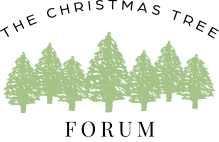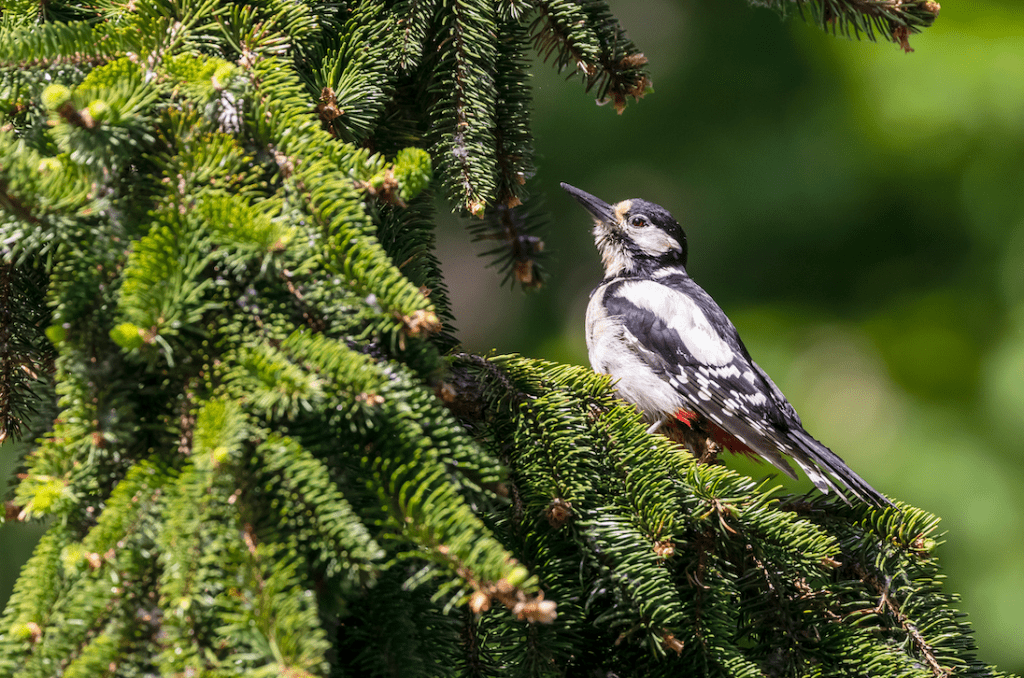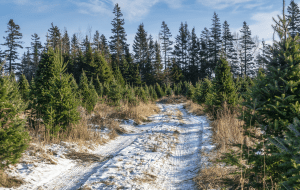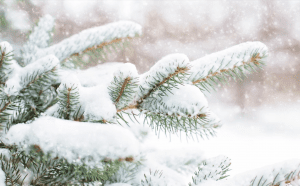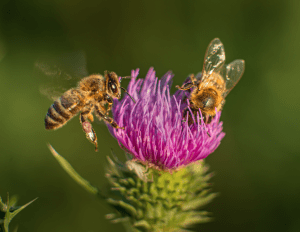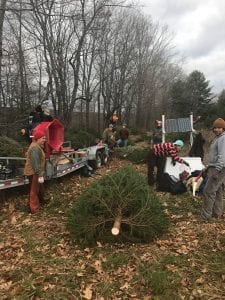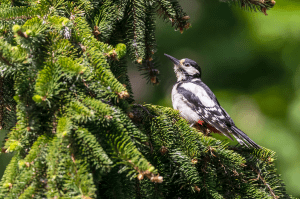It’s no secret that Christmas tree growers take pride in their environmentally friendly products. The environmental benefits provided during each tree’s long life cycle is something that Christmas tree growers can be proud of – and promote.
Recent market increases are in part due to a change in consumer preferences as a result of aging millennials and generation Zs. Their interests lie in products that are responsibly produced and hit environmental buzzwords like “sustainable”. The new consumer is interested in making purchases that stand for more than a final product. They’re interested in the full life cycle of products as well as the producer’s business model and the experience that the product may offer.
A product that provides oxygen and wildlife habitat is produced with minimal environmental impact, offers a fairytale winter experience, and decomposes at the end of its use is in high demand.
And, to the good fortune of Christmas tree growers, the product is selling itself. Growers are leveraging this demand by becoming more and more aware of the impact that their management practices have on the surrounding environments. That’s not to say that growers weren’t already producing an environmentally friendly product but now the task is to market the full life cycle.
Retail lot owners are being faced with a genuine interest in production practices. This is an opportunity to maximize the value of the product in the eyes of consumers – and translates into additional revenue.
Consumers are willing to pay more for a tree that provided wildlife habitat than they are for just a tree. The Christmas tree product will close its own life-cycle – it is already a sustainable product. A Christmas tree contributes to the ecosystem while it is growing and it decomposes and re-contributes to the ecosystem after the lights come off. Assuming the potential environmental impact from necessary management treatments such as fertilizers and pesticides is minimized, the impact that a tree has on the environment throughout its life is overwhelmingly positive.
Biodiversity is not a new term but the concept has taken more hold over the past decade, and it has become a bit of a marketing buzzword with the new consumer. Biodiversity refers to the idea that all species present in an ecosystem play an important role in sustaining the health of that ecosystem. Ecosystem productivity is improved when the ecosystem has high species diversity.
Nova Scotia’s 2011-2020 Natural Resources Strategy, The Path We Share described biodiversity as “the variety and interconnectedness of all life, including all plants, animals, and other organisms, the genes they contain, and the systems and processes that link them”. The foundation of Christmas tree production in Nova Scotia ensures that biodiversity is present.
Naturally regenerative stands ensure genetic diversity and ground cover ensures plant diversity, as do surrounding stands and shading hardwoods. The nature of the lot provides wildlife habitat, filters water, builds soil organic matter, stores carbon, and improves microbial habitats. All of these ecosystem services should be used in a grower’s marketing strategy; and, with minimal effort, growers can take further steps to improve the biodiversity of their lots.
When establishing a new tree lot, selectively leaving hardwoods that offer habitat will drastically improve the biodiversity of the tree lot. It will also offer additional shading to growing crop trees and new seedlings.
Look for the following features when deciding whether to classify hardwoods as weeds or ecosystem contributors:
- The tree has one or multiple cavities with the potential to offer habitat to cavity-nesting species (woodpeckers, owls, bats, and sometimes mammals). Consider whether the species that use these trees as habitat may also be predators to insect pests on balsam fir.
- The tree has deadwood with the potential to offer habitat for nesting or perching and or has a large canopy that has the potential to offer shade and additional habitat within the upper story.
- The tree is a healthy, mature tree with the potential to contribute to the ecology of the lot by providing habitat or improving the genetics of future trees.
Additionally, leaving discarded brush and coarse wood debris in the lot holds water and nutrients at all stages of the decomposition process and slowly releases them to neighbouring trees and seedlings. It also contributes to microbial life and builds soil organic matter, which improves soil water retention and nutrient holding capacity. Recently felled trees often upturn topsoil with their roots. Topsoil takes thousands of years to form. Dragging it away with debris can set the site back centuries in terms of soil quality. Give the soil a chance to fall off the debris before removing it if removal is necessary.
Other ecosystem features that may be present in a Christmas tree lot and should be protected include caves, dens, valleys, wetlands, open areas, and wintering sites, ponds, springs, and floodplains.
Topographic features provide specialty habitats for wildlife and foster lot resiliency. Further, the destruction of many of these features may be illegal (under the NS Endangered Species Act if it disrupts the habitat of an endangered or threatened species, or under the NS Wildlife Act if it disrupts fur-bearing animals).
It is a good idea to create lot maps for each lot that identify potential habitats such as those listed above. If these habitats are present on your property, creating a buffer zone around them will likely ensure adequate protection. If however, species at risk are present, additional management practices may be necessary from a legal and obligatory standpoint.
Species at risk can be plants, animals, or other organisms that are at serious risk of extinction.
In Nova Scotia, species at risk are categorized as endangered, threatened, vulnerable, extirpated, or extinct; all of which are considered protected. A descriptive list of the species that are at risk in Nova Scotia can be found at novascotia.ca or at www.speciesatrisk.ca/SARGuide/.
A shortlist of the species at risk in Nova Scotia is provided below for your reference.
Sightings of these species should be reported (1-866-727-3447 or at www.speciesatrisk.ca/sightings.
Mammals
- American Marten
- Little Brown Myotis Bat
- Northern Myotis Bat
- Tri-Colored Bat
- Canada Lynx
- Mainland Moose
Birds
- Bicknell’s Thrush
- Canada Warbler
- Chimney Swift
- Common Nighthawk
- Stern Whip-poor-will
- Olive-sided Flycatcher
- Rusty Blackbird
- Eastern Wood-Pewee
- Bobolink
- Bank Swallow
- Barn Swallow
- Red Knot
- Roseate Tern
- Piping Plover
- Harlequin Duck
- Peregrine Falcon
Lichens
- Boreal Felt
- Black Foam Lichen
- Wrinkled Shingle Lichen
- Vole Ears
Trees and Plants
- Black Ash
- Eastern White Cedar
- Ram’s Head Lady’s Slipper
- Rockrose
- Pink Coreopsis
- Thread-leaved Sundew
- Eastern Mountain Avens
- Eastern Waterfan
- Eastern Baccharis
- Spotted Pondweed
- Tall Beakrush
- Hoary Willow
- Plymouth gentian
- Water pennywort
- Golden-crest
- Redroot
- Tubercled Spike-rush
- Eastern Lilaeopsis
- Prototype Quillwort
- New Jersey Rush
- Long’s Bulrush
- Sweet Pepperbrush
Insects
- Sable Island Sweat Bee
- Yellow-Banded Bumblebee
- Macropis Cuckoo Bee
- Gypsy Cuckoo Bumblebee
- Monarch
- Transverse Lady Beetle
Reptiles
-
- Blanding’s Turtle
- Eastern Ribbonsnake
- Wood Turtle
- Snapping Turtle
